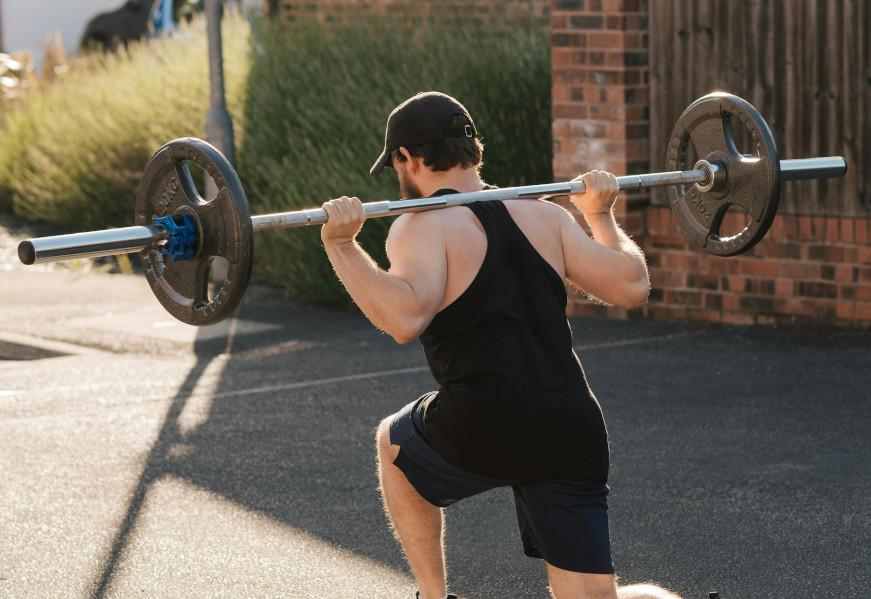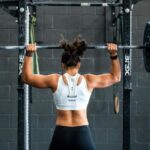Embarking on a bodybuilding journey beyond the age of 40 can be an incredibly rewarding endeavor. Not only does strength training at this stage work towards building muscle, but it also plays a crucial role in counteracting the age-related decline in muscle mass and strength. Individuals over 40 possess the ability to make significant muscle gains, though it requires a different approach compared to younger trainees. A commitment to regular training, proper nutrition, and adequate rest becomes paramount.
Bodybuilding after 40 is not about pushing the body to its breaking point but instead focusing on a sustainable and safe regimen that promotes muscle growth while protecting the joints. As ligaments and tendons may be more susceptible to injury with age, it is advisable to incorporate joint-friendly exercises and to pay greater attention to proper warm-up routines. Tailoring workouts to the individual’s current fitness level and avoiding overexertion ensures that muscle can be built effectively, even after the age of 40.
Age should not be seen as a barrier to bodybuilding; rather, it represents a stage of life that requires a thoughtful approach to strength training. Muscular hypertrophy can still occur post-40, as long as the training adapts to the capabilities and needs of the individual. The emphasis here is on consistency, a well-structured training program, and a holistic understanding of one’s own body. With these elements in place, individuals can pursue bodybuilding later in life with confidence and clarity.
Understanding the Aging Process and Muscle Development
As individuals age, they typically experience a decline in muscle mass and strength, partly due to hormonal changes and the natural progression of sarcopenia. It’s crucial to understand how these factors intertwine to craft an effective approach to muscle development post-40.
Impact of Aging on Muscle and Strength
Aging inevitably affects one’s physical capabilities. Muscle mass and strength typically decline with age, a reality that can influence overall fitness and metabolic health. This decline can start as early as the mid-30s but becomes more pronounced after 40. One’s ability to quickly generate force weakens, and the regenerative properties of muscle tissue diminish, making it more challenging to build and maintain muscle.
The Role of Testosterone and Hormones
Hormones, particularly testosterone, play a significant role in muscle development. Testosterone’s anabolic effects facilitate muscle growth and strength gains. Regrettably, as men age, they often experience a gradual decline in testosterone levels, starting in their 30s and accelerating after 40. This decrease can lead to reduced muscle synthesis, slower recovery, and an increased challenge in gaining muscle mass.
Sarcopenia and Muscle Mass Retention
Sarcopenia, the loss of muscle tissue as a natural part of the aging process, can significantly impact muscle mass retention. The condition is characterized by both a reduction in muscle fibers and a decrease in their size. Resistance training is the cornerstone of combating sarcopenia, as it triggers muscle protein synthesis and promotes the growth of muscle fibers, aiding to retain muscle mass and even encouraging growth in spite of the aging process.
Exercise Techniques and Adaptations for 40+ Bodybuilders
For individuals over 40, building muscle safely and effectively requires a focus on proper exercise form, modifications of classic lifts, and integrating mobility work into their training regimen.
Proper Exercise Form and Safety
Adherance to correct form during exercise is paramount for the 40+ bodybuilder to prevent injuries and ensure effective muscle engagement. For example, when performing pull-ups, the individual should keep their core engaged and avoid swinging to maximize the workout’s benefits and protect the shoulder joints.
- Squat: Feet shoulder-width apart, back straight, descend as if sitting back into a chair, weight on the heels.
- Deadlift: Neutral spine, bar close to the body, drive through the heels and extend hips to lift.
- Bench Press: Shoulders pinned to the bench, slight arch in the back, wrists straight, lower bar to mid-chest.
Modifications for Squats, Deadlifts, and Bench Press
Modifications to key lifts can help address the 40+ bodybuilder’s need for joint safety and muscle preservation.
- Squat Alternatives
- Box Squats: Utilize a box or bench to limit depth and focus on form.
- Goblet Squats: Holding a kettlebell or dumbbell for added stability.
- Deadlift Variations
- Sumo Deadlift: A wider stance decreases strain on the lower back.
- Trap Bar Deadlift: Reduces stress on lumbar spine and emphasizes leg drive.
- Bench Press Adjustments
- Close Grip Bench Press: Lessens the load on shoulders, targets triceps.
- Incline Bench Press: Shifts focus to the upper chest, reducing shoulder strain.
Incorporating Mobility Work into Training
Adding mobility exercises is crucial for maintaining the range of motion and reducing the risk of injuries.
- Include dynamic stretching in warm-ups, focusing on joint movements through their full range of motion.
- Utilize tools like foam rollers or lacrosse balls post-workout to address muscle tightness and improve flexibility.
- Employ a suspension trainer for exercises that enhance joint stability and encourage proper alignment during movements.
Strategic Workout Planning and Execution
Crafting a successful bodybuilding regimen after 40 hinges on strategic program design tailored to balance muscle groups, judiciously chosen training volumes and frequencies, and a commitment to incremental strength progressions.
Designing a Balanced Workout Routine
A well-structured workout routine ensures that all major muscle groups are targeted appropriately across the week to promote symmetry and prevent overuse injuries. One might divide their weekly schedule into push, pull, and leg days or opt for a full body routine several times a week. Key exercises such as deadlifts should be included for comprehensive posterior chain development.
Optimizing Training Volume and Frequency
For those over 40, the appropriate training volume and frequency are vital to elicit muscle growth without overtaxing the body. An individual should aim for 2-3 sessions per muscle group weekly, considering a moderate volume of about 15 working sets per muscle. A focus on recovery is paramount to sustain long-term progress.
Implementing Progressive Overload
Progressive overload is the gradual increase of stress placed upon the body during training. This can be achieved by adding more weight, increasing reps, or enhancing the intensity of exercises over time. Keeping a training log to track improvements is an effective way to ensure that they are consistently challenging their muscles for growth and strength gains.
Nutrition and Supplementation Strategies
Good nutrition and the right supplementation are crucial for muscle growth and recovery, especially for individuals over 40. Understanding the body’s changing needs can help maximize muscle-building efforts.
Caloric Needs and Macronutrient Balance
For bodybuilders over 40, a delicate balance of caloric intake and macronutrients is key. Allowing for subtle increases in total calories can support muscle mass gains, while maintaining a focus on macronutrients ensures quality growth. Carbohydrates should be allocated around training times for energy, protein is essential for muscle repair, and healthy fats are necessary for hormone balance and overall health. A breakdown of 40% carbohydrates, 30% protein, and 30% fats is a starting point, adjusting as needed for individual energy expenditure and progress.
- Carbohydrates: 40%
- Protein: 30%
- Fats: 30%
Protein Intake and Muscle Repair
Protein is the building block of muscle repair and synthesis. After the age of 40, muscles may require more protein for repair and growth. The recommended range is 1.4 to 2 grams of protein per kilogram of body weight. High-quality sources, such as lean meats, fish, poultry, eggs, and dairy, should be included in one’s diet. Those who struggle to meet their protein requirements through food alone can consider a high-quality protein powder supplement, ideally one that includes all essential amino acids.
- Recommended Protein Intake: 1.4 – 2 g/kg of body weight
Effective Use of Supplements
Supplements can play a supportive role, but they should not replace solid nutrition. A high-quality multivitamin and mineral supplement may aid in covering nutritional gaps. Supplements like glutamine may support recovery, and protein powders can help reach daily protein targets. For those over 40, ingredients that support healthy testosterone levels can be considered. It is important to choose supplements that are third-party tested for purity and potency.
- Supplements for consideration: Protein powder, glutamine, multivitamins, testosterone support
To recapitulate, individuals over 40 looking to build muscle should pay close attention to their caloric needs, ensure a balanced intake of macronutrients, prioritize protein to aid in muscle repair, and judiciously incorporate supplements to support their diet where needed.
Recovery and Injury Prevention Measures
As individuals age, recovery and injury prevention become critical in bodybuilding, necessitating a regimen that includes ample sleep, joint-care strategies, and effective management of aches and pains.
Importance of Sleep and Rest Days
Adequate sleep is vital for muscle recovery and growth. Adults should aim for 7-9 hours of quality sleep per night. Sleep enhances muscle repair and aids in balancing hormones that contribute to muscle development. Rest days are equally pivotal, giving muscles time to heal and rebuild. Striking a balance between workout days and rest days prevents overtraining and associated injuries.
Joint Health and Avoiding Overuse Injuries
Joint health is paramount for longevity in bodybuilding. Incorporating exercises that are gentle on the joints helps in reducing the risk of overuse injuries. It’s important to focus on form and control rather than heavy lifting at all times. Regularly engaging in low-impact activities and strength training can help maintain bone density and fortify the joints, minimizing the risk of inflammation and injury.
Dealing with Aches and Pains
When it comes to aches and discomfort, the adage ‘listen to your body’ holds true. Implementing anti-inflammatory practices such as applying ice, using compression, and elevating limbs can help manage minor pains. If pains persist, it’s imperative to consult a healthcare provider to prevent exacerbating a potential injury. Alongside these practices, a diet rich in omega-3 fatty acids and antioxidants can support recovery and reduce inflammation.
Psychology of Bodybuilding After 40
Embarking on a bodybuilding journey after the age of 40 requires mental adaptation as much as physical. Setting practical fitness goals, maintaining a high level of motivation and discipline, and effectively handling setbacks are crucial for success in this endeavor.
Setting Realistic Fitness Goals
They must recognize the changes that the body undergoes after 40, adjusting their fitness goals accordingly. It is essential to consider:
- Current fitness level
- Available time for training
- Physical limitations or health concerns
For instance:
| Age-specific Goals | Description |
|---|---|
| Strength Building | Focus on gradual increases in weight while maintaining form. |
| Endurance | Work towards longer sessions with moderate weights. |
| Flexibility & Mobility | Incorporate stretching and mobility drills to support muscle recovery. |
Staying Motivated and Disciplined
Motivation fuels the commitment to bodybuilding, and discipline transforms it into a sustainable lifestyle. They can stay motivated by:
- Celebrating small victories and progress
- Joining communities or finding workout partners
Discipline is best maintained through:
- Setting a consistent workout schedule
- Planning meals and recovery times
Dealing with Plateaus and Setbacks
Experiencing plateaus or facing injuries can be disheartening, but they are a natural part of the bodybuilding process. Strategies to overcome these challenges include:
- Adjusting the workout routine to include a variety of exercises
- Re-evaluating dietary habits to ensure optimal nutrition for muscle repair and growth
- Ensuring adequate rest and recovery time to prevent overtraining
In managing these hurdles, they should avoid drastic changes in routine and instead favor incremental adjustments that respect their body’s capabilities and limitations.
Beyond the Gym: Lifestyle, Commitment, and Community
Building strength and maintaining fitness after 40 isn’t just about what happens during gym sessions; it’s a holistic approach that involves everyday lifestyle choices, the support of a community, and a sustained commitment.
Incorporating Fitness into Daily Living
Adopting a fitness-oriented lifestyle means finding opportunities for physical activity beyond structured workouts. Daily Living Activities can include:
- Active Transportation: Choosing to walk or cycle for short trips rather than driving.
- Micro-workouts: Integrating brief, concentrated bouts of exercise such as squats or push-ups during breaks in a workday.
- Active Recreation: Engaging in fun physical activities that challenge the body, like hiking or playing a sport.
Joining a Supportive Fitness Community
A fitness community offers motivation, accountability, and collective knowledge. People over 40 should consider the following when looking for the right Community:
- Local Fitness Groups: Search for local exercise or sports clubs that cater to a mature demographic.
- Online Forums: Participate in digital platforms focused on over-40 fitness, sharing progress, and encouragement.
- Gym Membership: Join a gym with a strong sense of community and specialized classes for those above 40.
Long-Term Commitment to Health and Strength
True strength is achieved with a long-term commitment to health. Long-Term Strategies include:
- Annual Fitness Goals: Set and review yearly targets to stay motivated.
- Regular Check-Ups: Monitor health metrics with a medical professional to adapt fitness regimes accordingly.
- Consistent Routine: Establishing and adhering to a regular workout schedule is crucial for maintaining fitness and strength over time.








